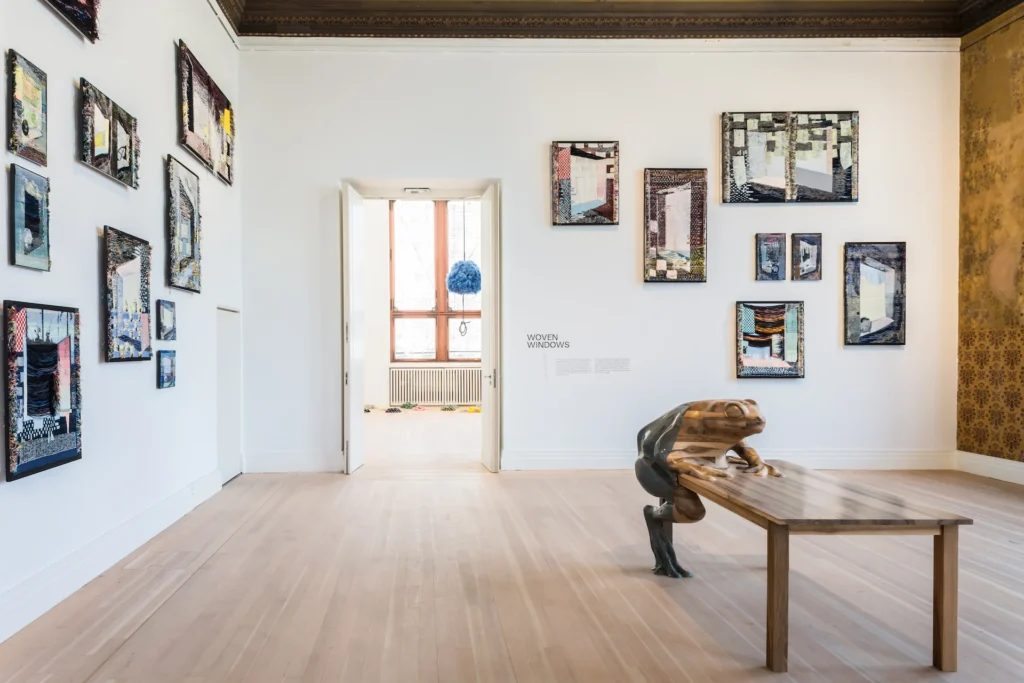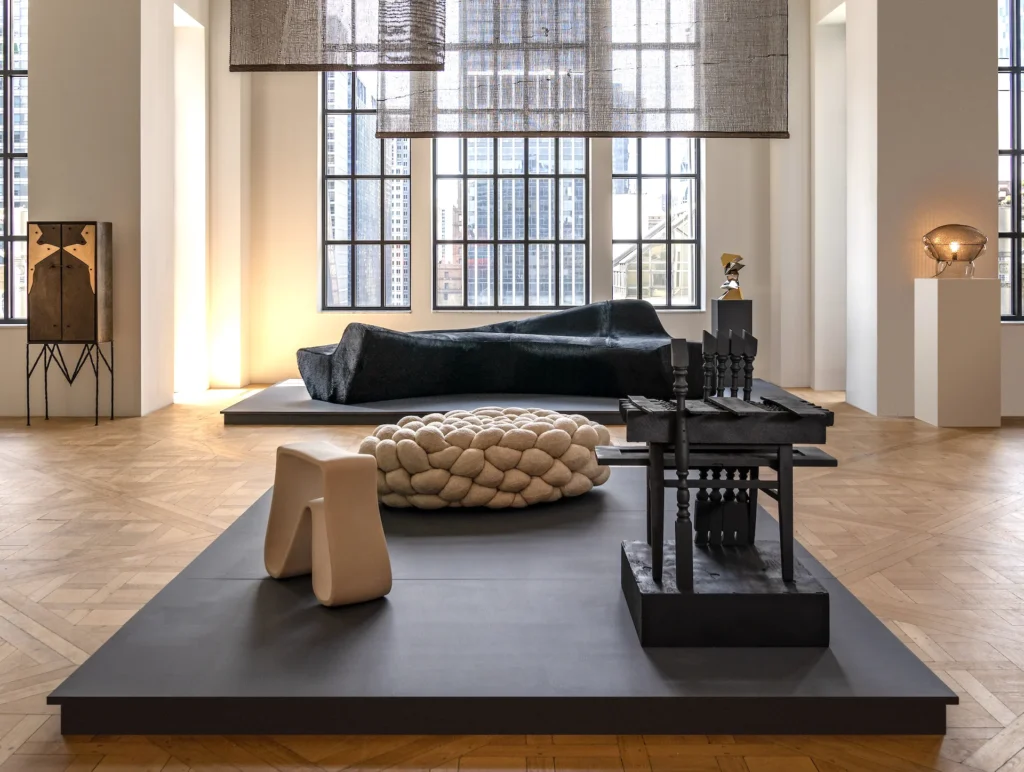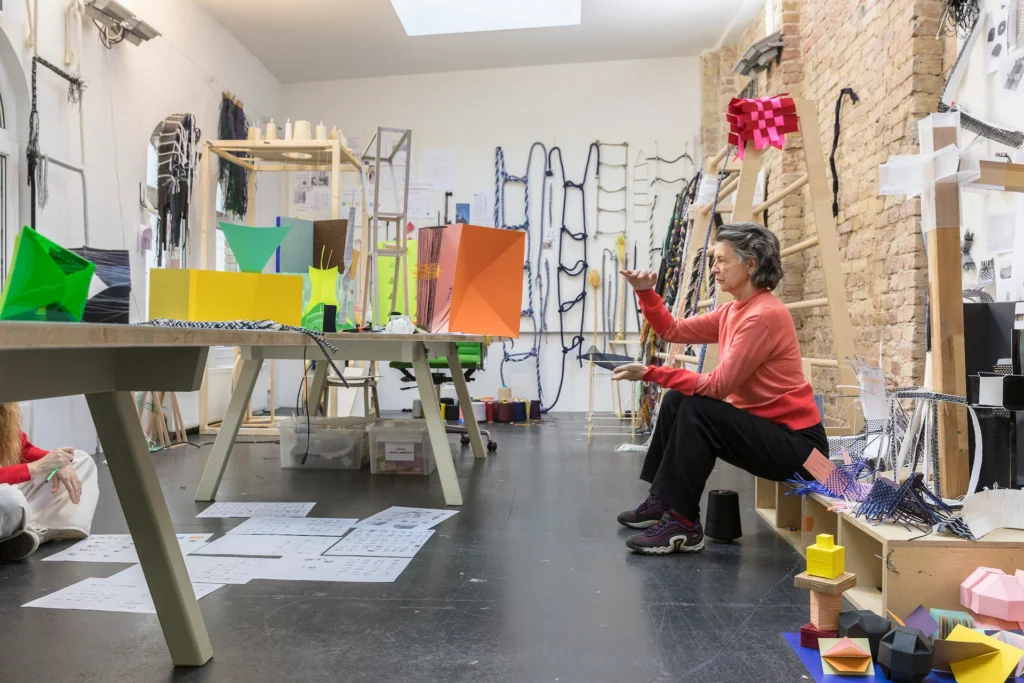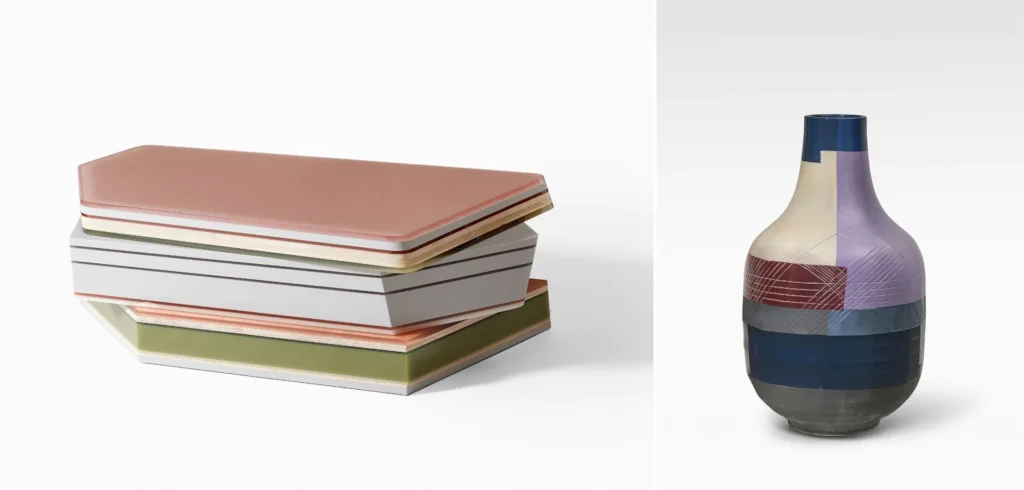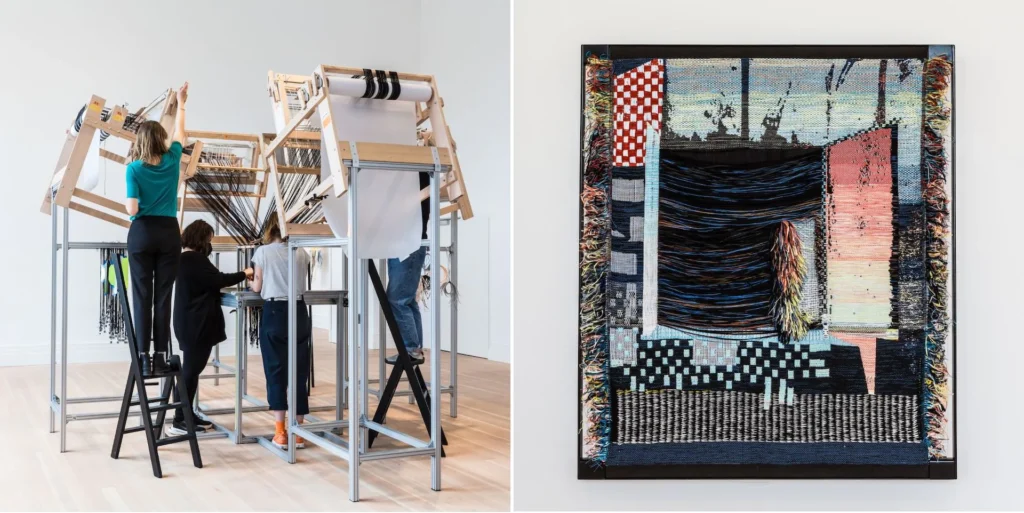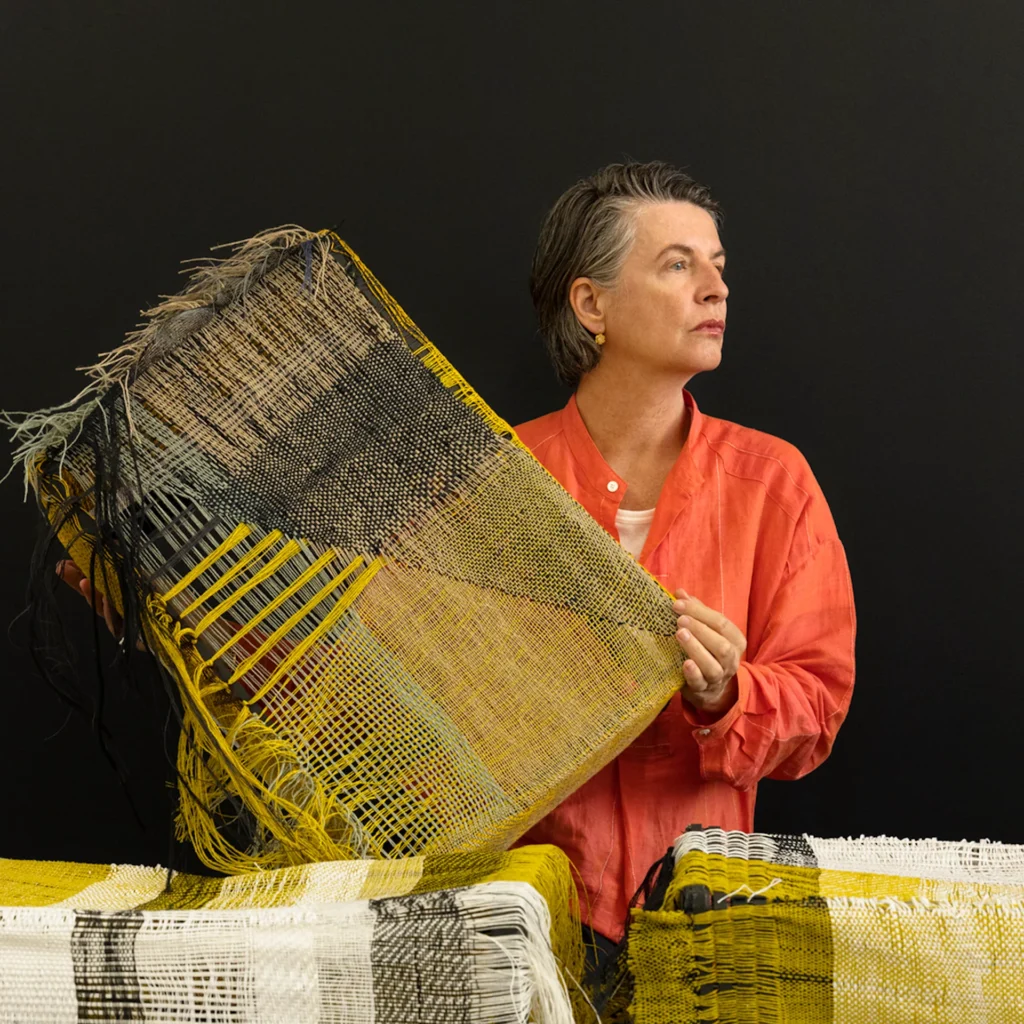
“It is impossible to overstate the scale of Hella’s achievements. Not only is she one of the first women to establish herself as a global leader in industrial design, but she did so on her own terms without ever compromising values of sustainability, provocation, resonance, research, collaboration, and experimentation.”
—Alice Rawsthorn, cofounder of Design Emergency and author of Design as an Attitude
To kick off my talk with Hella Jongerius—the first of this season’s Materials and Furniture: The Legends webinar series—I played Spring, Concerto No. 1 in E Major from Vivaldi’s Four Seasons. Because when I think of Jongerius’s trailblazing practice, I think of vibrant, landscape-inspired palettes, a revitalizing feeling of lightness, and a steadfast spirit of renewal. For thirty years, this Dutch-born, Berlin-based designer has been creating brilliantly unexpected, beautifully crafted furniture, textiles, ceramics, and more for brands like Vitra, Maharam, Nymphenburg, and KLM, as well as for Galerie kreo in Paris. Throughout, she has never wavered from her deeply held principles even as she remains firmly in touch with the ever-changing zeitgeist.
To underscore her dedication to rigorous experimentation, Jongerius named her studio Jongeriuslab (originally founded in Rotterdam in 1993). With extraordinary curiosity and courage ever since, she meticulously researches materials, processes, and even color theory to ensure her work reflects her ethics, from sustainability and social responsibility to the preservation of craft traditions and respect for human emotional and spiritual needs. She has been outspoken against the design industry’s wastefulness, calling out its role in flooding our world with unnecessary, short-lived products and compounding rather than combatting our global environmental crisis. She has embraced the term “misfit” to describe her signature approach; it is the title that she gave both her 2010 monograph and her 2011 retrospective at Museum Boijmans Van Beuningen in Rotterdam. Misfit, she explained, is the notion of imperfection, which like handwriting reveals the humanity beyond the object.
Last spring when I curated The Female Voice in Modern Design, 1950-2000 at Carpenters Workshop Gallery—an exhibition celebrating outstanding female designers from Europe in the second half of the 20th century—it was clear that Jongerius must be included. In the 1990s, she made significant contributions to the Netherlands’ burgeoning avant-garde design movement, starting with her studies at the conceptually pioneering Design Academy Eindhoven and continuing through her early collaborations with radical Dutch design collective Droog. The political and cultural critiques present in her work from the beginning left an indelible imprint on global design culture in the new millennium. When I called her studio to see if any early work might be available for the Carpenters exhibition, I was overjoyed to learn that Jongerius kept one example from her Porcelain Stool series, commissioned by Droog in 1997 and produced by German porcelain manufacturer Rosenthal. It became the centerpiece of the 1990s section of the exhibition.
Jongerius’s minimalist, unglazed Porcelain Stool exemplifies the prescience of her vision, foreshadowing soon-to-follow transformations in design more broadly. Traditionally, porcelain was used almost exclusively for refined tea services, dinnerware, and decorative figurines. Today, its application is wider, found in a range of everyday designs from razors to architectural elements. If we have changed our perception of this material, Jongerius deserves credit for spearheading our collective rethinking of its possibilities beyond the conventional. Twenty-five years later, Jongerius clearly remembers how difficult it was to fabricate the Porcelain Stool, even for the experts at Rosenthal. The design’s next incarnation, the limited-edition Felt Stool for Italian brand Cappellini in 2000, posed a similar challenge and had to be stitched by hand in Jongerius’s studio when it proved impossible to produce in the Cappellini factory.
Everything Jongerius designs, in fact, entails complex production processes, because she is always reinventing materials, pushing their boundaries, and injecting them with new meanings. Since materials are inherently political, she said, she believes they should occupy a central place in designers’ practices. Jongerius’s abiding mission is to marry handcraft and industry, creating products imbued with individuality and a human touch—qualities generally lacking in mass-market goods. This goal has occupied many designers since the 1960s, but Jongerius has achieved it in her own way, using her own voice, while also urging the industry to follow suit.
In craft, she said, there is a sense of experimentation, material intelligence, and humanity, which tend to get lost in industrial production. Craftwork, to her, is a tool to think and explore, because only the hand allows freedom. As an industrial designer, Jongerius pushes industry towards craft from within, advocating for a greater sensuality in products because it resonates more powerfully with users. Jongerius’s industrial practice is complemented by her projects for Galerie kreo, the preeminent contemporary design gallery in Paris that has represented her limited-edition work for decades. In contrast to mass production, creating for a gallery setting offers the chance to fulfill dreams. The couture-level production calls for risk-taking experimentation to bring groundbreaking ideas to life; nothing is impossible.
For her Swatch Table for Galerie kreo, Jongerius collaged resin in a range colors, from opaque to transparent, from matte to gloss, and seamlessly integrated the candy-like artificial material with earthy walnut wood to magical effect. Jongerius’s unforgettable Frog Table and Snail Table—both of which are technical masterpieces—likewise could be achieved only in the context of a expert gallery like Galerie kreo.
Hella Jongerius: Woven Cosmos, her recent solo exhibition at Berlin’s Gropius Bau, showcased Jongerius’s prescient thinking around weaving and the future of textiles. True to Jongerius’s values, the project shined a light on critical issues in industrial textile production and the need for more sustainable approaches through a series of experimental installations and objects—most created expressly for the show using upcycled materials—accompanied by interactive performances, including a séance. In industry, Jongerius told us, weaving processes tend to be shallow, lacking vision. The creation of fabrics today is rarely non-toxic, and the social aspect of traditional weaving has been completely lost. The exhibition asks us to imagine alternative possibilities at the intersection of craft and industry, drawing on techniques both new and old.
“It’s almost a cliché, but we are all yarns in the bigger cloth,” Jongerius said in an interview about Woven Cosmos. “We are all interwoven, it’s about connection.” Jongerius has always wielded her unique talent for blending tradition and innovation in service of a greater purpose: finding the humanity beyond the object. This article was published today in Forum Magazine by Design Miami/.

